Landscape Planning and Design in Mountain Environments IS Different! - Part Four

In some ways Landscape Design in warmer climates is similar, but in many ways, it is VERY Different! A number of factors play into the planning and design of mountain landscaping. Following are areas where the differences affect design and planning so that Mountain Landscape Projects can not only survive but thrive.
In Part Four we discuss what Sustainable Design in mountain environments and special considerations for a healthy native landscape.
Can I have a Sustainably Designed Landscape?
- We hear this word, “Sustainability”, applied to virtually everything in our culture these days. In Landscape Architecture it is all about Planning Sustainability into a Comprehensive Landscape/Land Use Plan. In fact, a professor of Landscape Architecture, the late John T. Lyle from Cal Poly Pomona, coined the term in the mid 1990’s and expands on its virtue in his book Regenerative Design for Sustainable Development. As part of his legacy at Cal Poly, he founded and directed the Center for Regenerative Studies.
- What does this Mean in the Twenty-first Century? It begins with Honoring Principles of the Sustainable Sites Initiative as a SITES AP (Sustainable Sites Accredited Professional). SITES is administered by the US Green Building Council, (USGBC), the organization that handles LEED (Leadership in Energy and Environmental Design) programs. Certification for both SITES and LEED is managed by the Green Building Certification Incorporated (GBCI). A future Blog Post will be solely dedicated to SITES in the mountain environment
- SITES Principles incorporate making appropriate choices in
- Look for opportunities to mimic natural systems in design intent
- Grading and Drainage Practices and Facilities to minimize soil erosion and contain stormwater on the site it lands
- Protection of Water and Soil Resources
- Minimizing Impacts to and Preserving Aquatic Ecosystems and Shorelines
- Plant Material trending toward Native Plants and plant communities
- Water Management – Use and Conservation for Irrigation
- Certified Organic mulches, amendments and fertilizers approved by OMRI (Organic Materials Review Institute) or other such organizations
- Sourcing Wood Products that are grown, managed and harvested using certified sustainable practices, such as FSC and shipped from within 500 miles
- Land Use and Reuse of previously developed Sites
- Rehabilitation of Disturbed Land to a stable and balanced state
- Optimizing Wildlife Habitat
- Provide for a high level of User Wellbeing and Positive User Experience, Universal Access, Physically, Mentally and Emotionally enhancing places
- Maintenance practices that us alternatives to chemical fertilizers and pest controls and fossil fuel powered machinery
- SITES Principles incorporate making appropriate choices in
Why is Stormwater Management Important?
- Stormwater can have a major impact on Mountain Ecosystems as previously expressed
- It shapes terrain
- It can Feed or Choke habitats both Aquatic and Terrestrial depending upon the condition or stability of upstream terrain
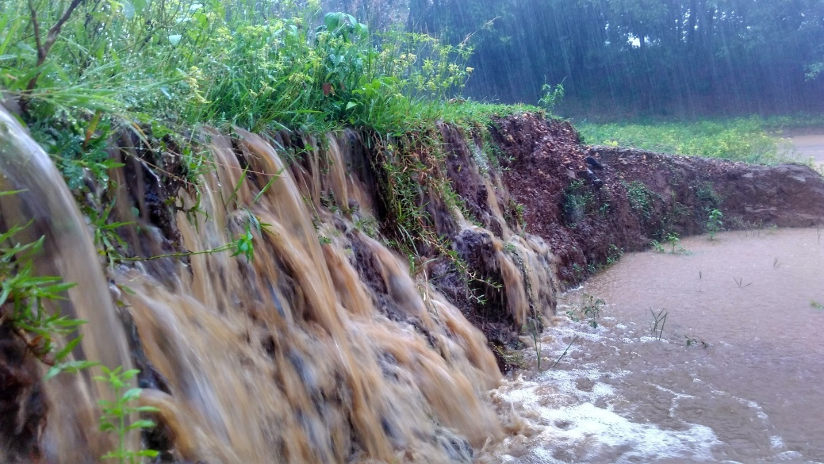
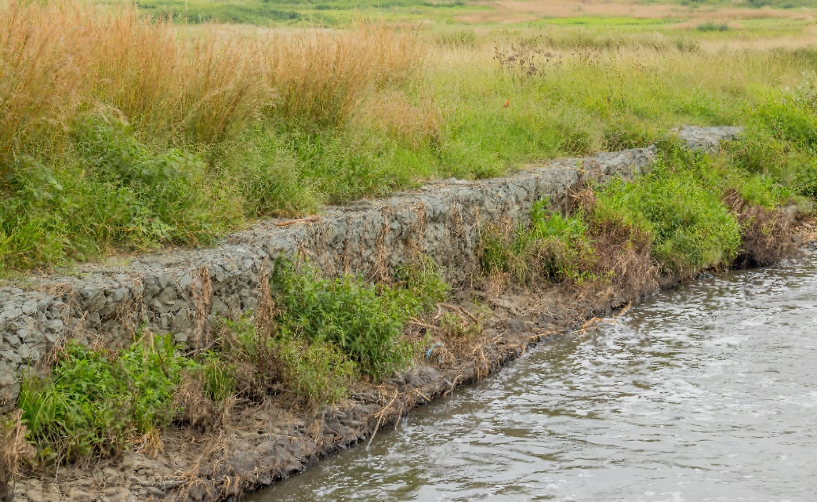
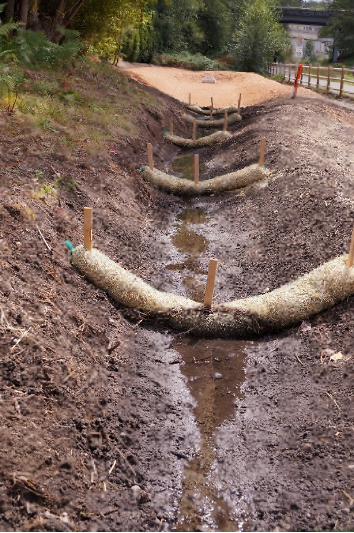
- To protect Ecosystems, also known as Watersheds, there are a variety of jurisdictional regulations depending upon your location
- In the Sierra Nevada, the California Water Resources Board – Lahontan Region, aka “Lahontan” Manages every kind of Development in the Eastern Sierra, apart from the Lake Tahoe Basin
- In the Lake Tahoe Basin, Lahontan and the Tahoe Regional Planning Agency are closely tied and apply strict rules to development and development type activities including Landscaping, especially along the shore zones, to protect Tahoe’s Clarity and unique habitat as a High Altitude Lake
- Development and development activities play a huge effect on how stormwater behaves and its effect on the health of nearby water ways and surrounding areas. Soil Stability can be greatly compromised leading to detrimental effects on Water Habitats from intrusion of soils and nutrients
- Human Health Safety and Welfare are potentially impacted by poor development practices and lack of mitigation measures
- The use of Low Impact Development (LID) Techniques and Best Management Practices (BMP) are implemented to mitigate negative effects on Waterbodies and related habitats
- LID is closely tied to SITES Principles while planning for Sustainable Landscapes in that we strive to Mimic Natural Systems.
- For example, construction of Bioretention Basins, pictured below that allow slow, natural and aesthetically pleasing infiltration of stormwater are much like beautiful ponds that pool and slow the progression of water as it moves downhill allowing water time to sink into soils, providing places for water birds to rest and eat.
- BMP methods include a predominance of often Engineered Mechanical Stabilization techniques, such as slope armoring with rock and cobble or installation of Infiltration Trenches but do not serve to aesthetically restore natural systems the way bioretention systems do
- Both LID and BMP can be used in complement to each other and must be considered for appropriateness in each site situation.
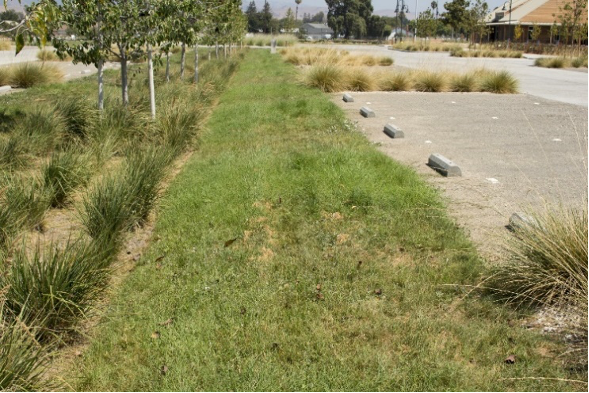
The Pervious Pavement absorbs water to allow infiltration of water captured in galleries right beneath the paving. Excess water sheet drains across a filtering strip of grass that picks up sediment and, chemicals and slows flow to a bioretention basin/swale where water can infiltrate into local aquifers or be conveyed to other infiltration facilities. This application can be used varied site scales from smaller residential settings as well as larger commercial and public locations.
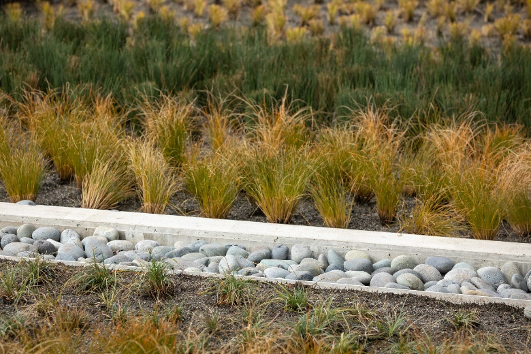
Why Protect Fragile Nearby Waterbodies?
- Local Streams, Rivers and Lakes are important aspects of Mountain Ecosystems
- They create Habitat for Fish, Wildlife and Aquatic Insects – all of which are important in the Balance of all life in Mountain Environments
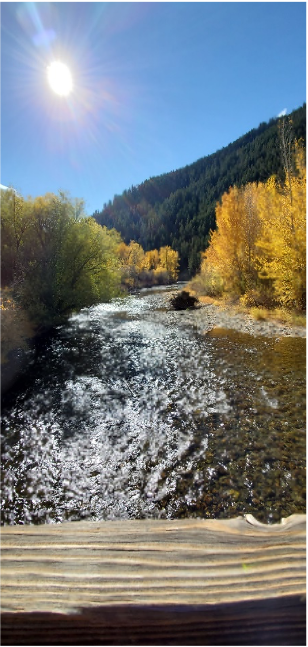
- They are Fragile due to their Seasonality as they are subject to fluctuations in flows from snow melt, summer storms and local diversions (for irrigation water) that impact bank stabilization
- Care for the Landscape equals care for Local Waterways –examples of organizations that Foster Stewardship through proper Landscape Planning and Maintenance include:
- Trout Friendly Landscaping through the Wood River Land Trust in the Wood River Valley, Ketchum, Sun Valley, Hailey and Bellevue, Idaho https://woodriverlandtrust.org/trout-friendly/
- River Friendly Landscaping through the Truckee River Watershed Council in the Truckee River Watershed from Lake Tahoe, California to the Nevada State Line https://www.truckeeriverwc.org/
- Trout Friendly Lawns in the Jackson Hole, Wyoming https://jhcleanwater.org/initiatives/trout-friendly-lawns/
- Trout Friendly Landscapes through the Long Tom Watershed Council, Eugene, Oregon https://www.longtom.org/science-projects/amazoncreek/trout-friendly/
- Protection from erosion, salts, fertilizers, and chemicals are key aspects of Stewardship
- Even if you are not located directly near a waterbody – surface stormwater can carry these things a long way, especially if there is a lot of pavement and other impervious surfaces connecting to streams and rivers
- Reestablishing and maintaining streambank stabilizing vegetation also provides shady habitat for fish during warm summer hours
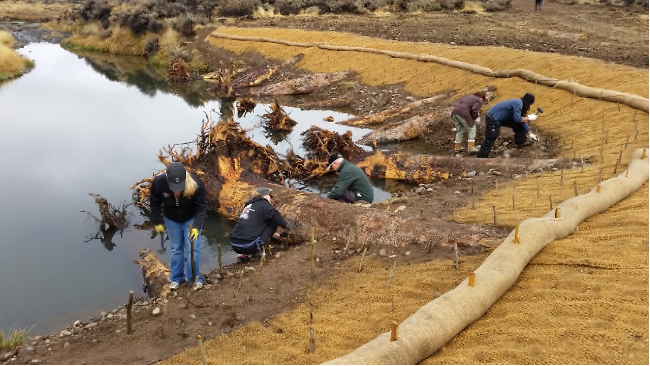
- Methods seen in the above photo include:
- Fine Grading to establish a gentle slope to minimize erosion
- Anchoring soil in place with
- Jute netting
- Straw waddles which also capture any sediment that might be picked up by stormwater
- The stakes you see are harvested from nearby willows hammered into the bank and are expected to sprout and take hold stabilizing the soil and providing shady fish habitat within a few years
- Logs and Root wads provide areas where moving water pools and eddies providing more fish habitat
- Not seen is native grass and wildflower seeds applied to the soil before the jute netting was laid down
Why is having Healthy Soil Important?
- Good soil health provides a stable fertile place for newly planted plants to establish, grow and thrive
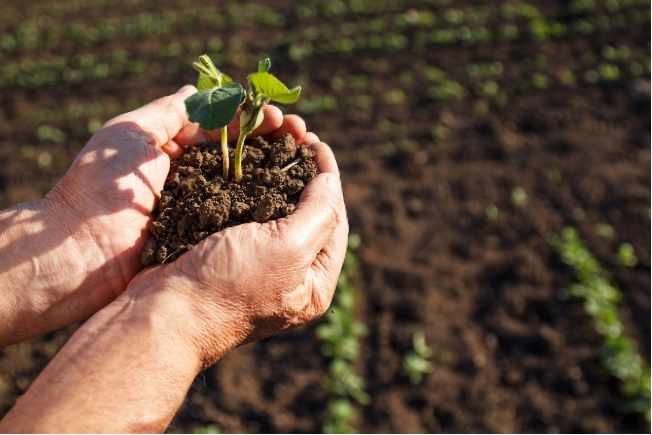
- Most high-altitude soils lack optimum qualities for vigorous landscape plant health and adaptation
- Short and cool growing seasons, low carbon plants, and typically dry summer conditions greatly affect soil organic matter content, structure and vitality
- It can be impacted by disturbance which kills Beneficial Microbes that are present in soils to aid root systems in uptake of air, water and nutrients
- Mycorrhizae supplements in amendments replace lost Beneficial Microbes
- Replacement by means of proper nutrient supplements including application of Mycorrhizae teas or powders, Compost and Mulches help fortify and protect Mountain Soils
- Unchecked Stormwater can remove key nutrients and destroy soil structure
- In the Mountain Environment, Impacts are magnified due to the fragile nature of local soils
Coming up, Part Five explores some of the more fun sides of creating our unique place in the Mountain Environment

